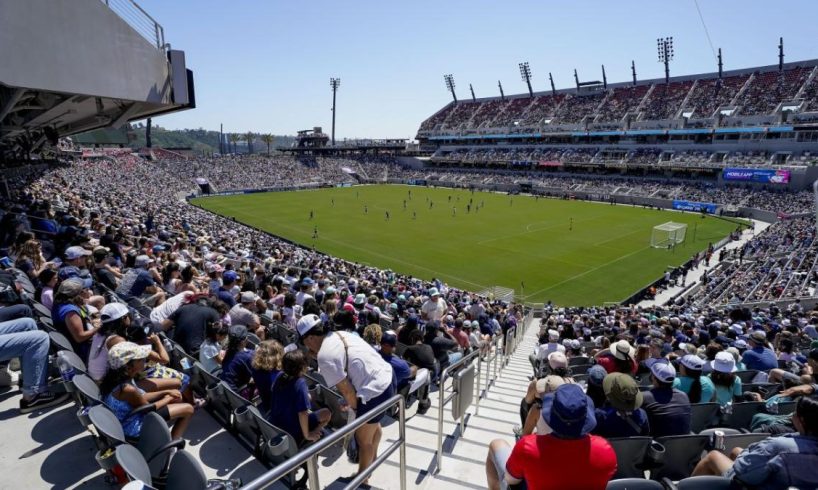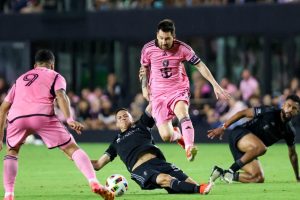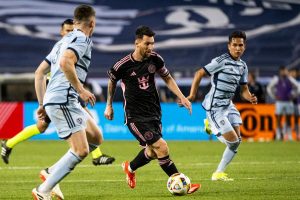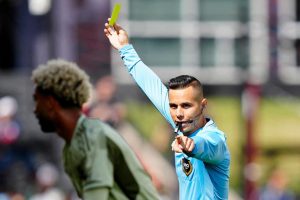
Today’s guest columnist is John David Wicker, San Diego State University’s director of Intercollegiate Athletics.
The opening of Bashor Field at Snapdragon Stadium on Sept. 3, 2022 in San Diego marked a new era of multi-purpose facilities at the collegiate level. With athletic departments under pressure to increase revenue, enhanced utilization of new and existing facilities provides diversified revenue streams, increased return on investment and the opportunity to further engage your community.
More from Sportico.com
With the opportunity to create a brand new stadium to replace the aging SDCCU Stadium, San Diego State’s athletics and institutional leadership wanted to build a facility that was right-sized for SDSU football while also being designed to host the array of events that visit the eighth-largest city in the country—soccer, concerts, dirt shows, rugby, football, lacrosse and private events held throughout all areas of the stadium. As we approach the first anniversary of the stadium opening, the design and execution of the initial plan has certainly been a success.
Design Approach
As we began the planning process for a new stadium for San Diego State Athletics and the San Diego community, the priority was building a multi-purpose facility designed with a San Diego vibe. We challenged our design team—led by Gensler, an architect firm with its sports practice based in Los Angeles—with creating a facility that met all the traditional requirements of a stadium while also incorporating unique elements specific to the San Diego region and taking advantage of our temperate Mediterranean climate.
We also directed the designers to create differentiated premium seating areas to accommodate a variety of price points and include numerous social areas throughout the concourse for everyone to enjoy. In total, we wanted an abundance of different opportunities for fans to create their own experiences within the overall event.
Design Elements
The designers incorporated several signature fan-focused elements in the new stadium:
The Sycuan Piers, a standing-room-only area extending into the seating bowl toward the field of play that mimics a pier going into the Pacific Ocean.
The Still by Cutwater, an outdoor social area/bar underneath the northwest scoreboard.
The Cox Business Field Club, where spectators can cheer the team as they enter the field before kickoff and access the field area just outside the club to experience the event at field level.
We intentionally sought out popular local restaurants in a variety of categories to serve as concessions partners in the stadium to further the local connection of the stadium experience. To complement the brick-and-mortar concessions, we also incorporated space for food truck parking inside the gates to provide a variety of options that could be tailored to the event in the stadium, whether for a full venue event or a smaller private function.
Also, San Diego has been called the craft beer capitol of the U.S., so we enhanced the food and beverage offerings with a wide variety of craft beer choices to go along with more traditional options.
Another important design consideration was providing great sightlines and exceptional acoustics for the variety of events that will be scheduled in the building.
Revenue Generation
Given that the new stadium needed to pay for itself, maximizing revenue generation across all areas of the building was paramount throughout the design and operational planning process. In fact, we developed a business model prior to putting pencil to paper to ensure that our decisions maximized revenue and enhanced the fan experience.
Sponsorship revenue was a key component of the stadium pro forma and was considered throughout the design process. Minimizing fixed signage in the stadium and maximizing LED signage throughout provides flexibility for sponsors of all events to execute marketing plans. This creates opportunities for future stadium tenants to maximize revenue opportunities, as well as allowing for any one-off events to come to Snapdragon Stadium. Only the highest-level stadium sponsors, The Founders, has fixed signage, thus creating permanent exposure for this group at all events. The only stadium sponsor with signage and marketing exclusivity in the stadium across all events belongs to the naming rights partner, Snapdragon.
The flexibility to sell sponsorships with very limited stipulations tied to the building is a significant selling point for tenants. Sponsor revenue is a key driver of success for any stadium partner, and it was important to SDSU to create as many avenues to generate revenue as possible.
Pro Sports Partners
Having professional sports teams as stadium tenants was always a desired outcome when developing the stadium, and being in the eighth-largest city in the U.S. created opportunities to pursue a variety of partners. The stadium’s ability to generate revenue from all areas of the stadium was pitched to various leagues during the marketing process.
From a ticketing perspective, tenants have access to sell and retain revenue from all areas of the stadium including the premium areas, with some exclusions around the Sycuan Founders Club and Suites. SDSU football season ticket holders are provided priority access to purchase tickets from the partners prior to selling to the general public.
Snapdragon Stadium is the home field for the San Diego Wave FC of the NWSL and the San Diego Legion of Major League Rugby starting this year. The Wave have already broken numerous NWSL attendance records, including largest crowd, largest playoff crowd and largest opening day crowd. The team currently leads the NWSL in average attendance.
Most recently Snapdragon Stadium finalized a partnership with the new MLS team in San Diego. From the beginning of our process to build a new stadium, we made it a priority to bring an MLS franchise to Snapdragon Stadium and the San Diego community. And on May 18, MLS announced the 30th team would indeed call Snapdragon Stadium home. Commissioner Don Garber called the stadium “soccer ready” from the day we opened the doors, a testament to the work we did in creating a stadium for the community where partners could find success across the board.
Less than a year after opening Snapdragon Stadium, we have realized the benefit of putting a great plan in place. Along with our stadium tenants, we have welcomed Jimmy Buffet, The Red Hot Chili Peppers, Supercross, Monster Jam, a Gold Cup semifinal match featuring the U.S. men’s national soccer team and the Manchester United-Wrexham friendly, to name a few. As evidenced from the events scheduled in the stadium, being thoughtful in our design, identifying areas to generate revenue every day of the year, leaning into what makes our community special and then building a stadium that reflects those qualities is a win for our community and San Diego State.
John David Wicker was introduced as San Diego State University’s director of Intercollegiate Athletics on Oct. 24, 2016. Wicker has overseen numerous capital projects upon his return to The Mesa, including the construction of Snapdragon Stadium, the Aztec football program’s new state-of-the-art facility that serves as the centerpiece of the SDSU Mission Valley redevelopment plan, along with a highly anticipated River Park. Additionally, he has been at the vanguard of name, image and likeness (NIL) discussion across collegiate athletics, and has played an active role in helping to shape legislation affecting the college athletics landscape at both the state and federal level.
Best of Sportico.com
Click here to read the full article.






